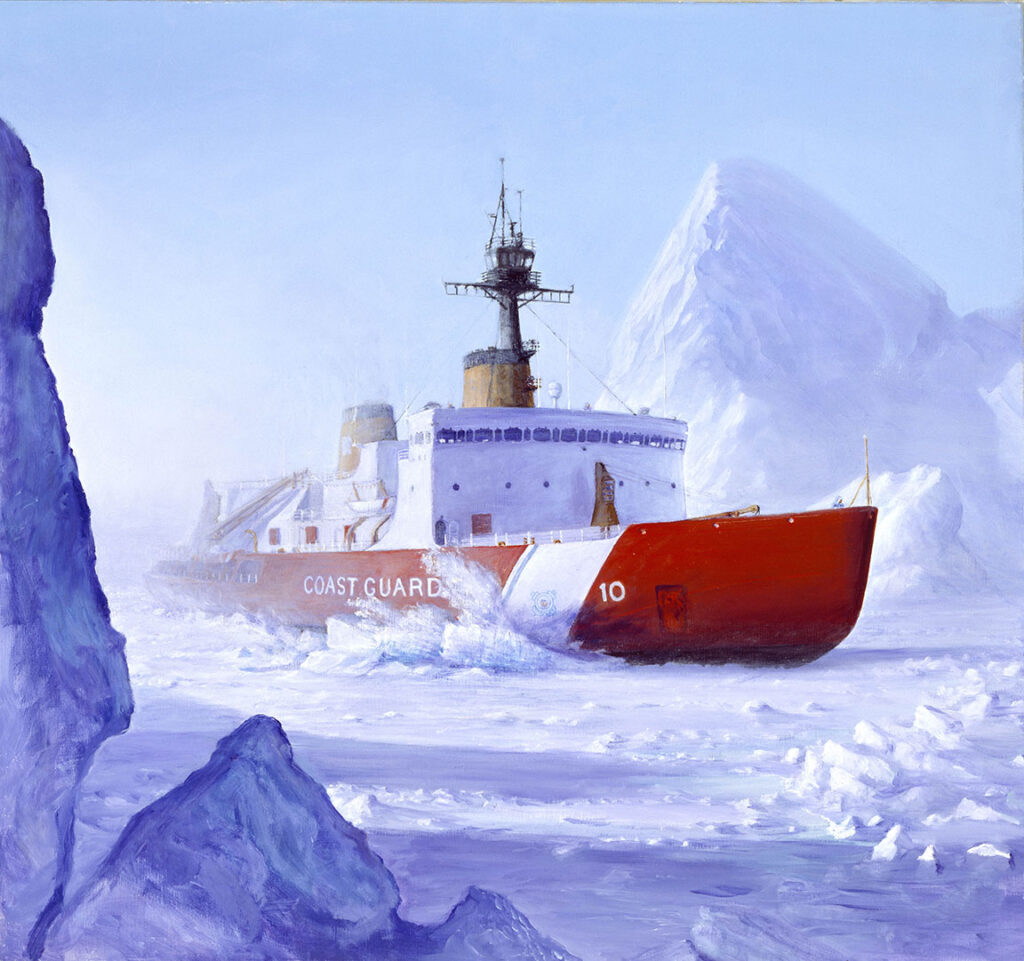The 399-foot U.S. Coast Guard icebreaker Star opens a channel to Greenland. U.S. COAST GUARD
The Watch Staff
The recent agreement involving Canada, Finland and the United States to produce icebreakers will help maintain the international rules-based order in the Arctic and is an important step to counter growing cooperation between the People’s Republic of China (PRC) and Russia, experts contend. The pact will also provide lower costs and technological transfers among the allies, which will aid more broadly in NATO’s defense of its northern flank, according to two U.S. experts on the PRC who examined the issue in Foreign Policy, a U.S. magazine.
The Icebreaker Collaboration Effort or ICE Pact was reached at the July 2024 NATO summit in Washington, D.C. The agreement’s details are being negotiated with an announced deadline to issue a memorandum of understanding by the end of the year. Although still in its early stages, the pact promises to provide icebreakers at an affordable cost to NATO members and global partners. “This collaboration is intended to strengthen the shipbuilding industry and industrial capacity of each nation — and build closer security and economic ties among our countries through information exchange and mutual workforce-development focused on building polar icebreakers, as well as other Arctic and polar capabilities,” a White House news release stated.
The U.S. Coast Guard, which operates the U.S. icebreaking fleet, has commissioned three more icebreakers with a projected cost of $3.2 billion. The first ship is scheduled for service by 2030. Recently, the Coast Guard acquired a commercial vessel that it will convert into a medium-sized icebreaker, the first of many such vessels in the pipeline intended to bolster national security and Arctic defense. The Aiviq, a U.S.-registered ship originally built to serve as an Arctic oil-exploration support vessel, will be modified to operate as a medium-polar icebreaker. The $125 million icebreaker is expected to be ready for duty in two years and will use the Alaskan capital and port city of Juneau as its homeport.
The need for more allied icebreakers is acute, wrote Matthew P. Funaiole, vice president of the iDeas Lab at the Center for Strategic and International Studies and senior fellow with the China Power Project, and Aidan Powers-Riggs, a research associate for China analysis with the iDeas Lab in Foreign Policy. The growing cooperation and presence of the PRC and Russia in the Arctic could threaten the demilitarized, cooperative order in the region, which has been in place for decades. Funaiole and Powers-Riggs point to the U.S. Department of Defense’s July 2024 Arctic Strategy, which identifies the PRC and Russia as threats to the stability of the region: “The increased competition and militarization in the Arctic region, especially by Russia and China, is concerning. … We cannot be naïve and ignore the potentially nefarious intentions of some actors in the region. We must remain vigilant and prepare for the unexpected,” the authors quote Rob Bauer, the chair of NATO’s Military Committee in 2023. “Looking forward, building collective capabilities to safeguard peace and security in the Arctic must remain one of NATO’s north stars. Maintaining a NATO presence in this remote frontier is key to preserving the alliance’s Arctic influence — and protecting U.S. interests,” they write.
U.S. icebreakers don’t just push through thick ice to open sea lanes. The ships also conduct and support scientific research in the Arctic and Antarctic, conduct search and rescue operations, law enforcement actions, and protect marine resources. But the priority for the new ships will be maintaining a presence in U.S. territorial Arctic waters and defending economic interests in the country’s Exclusive Economic Zone north of Alaska.

